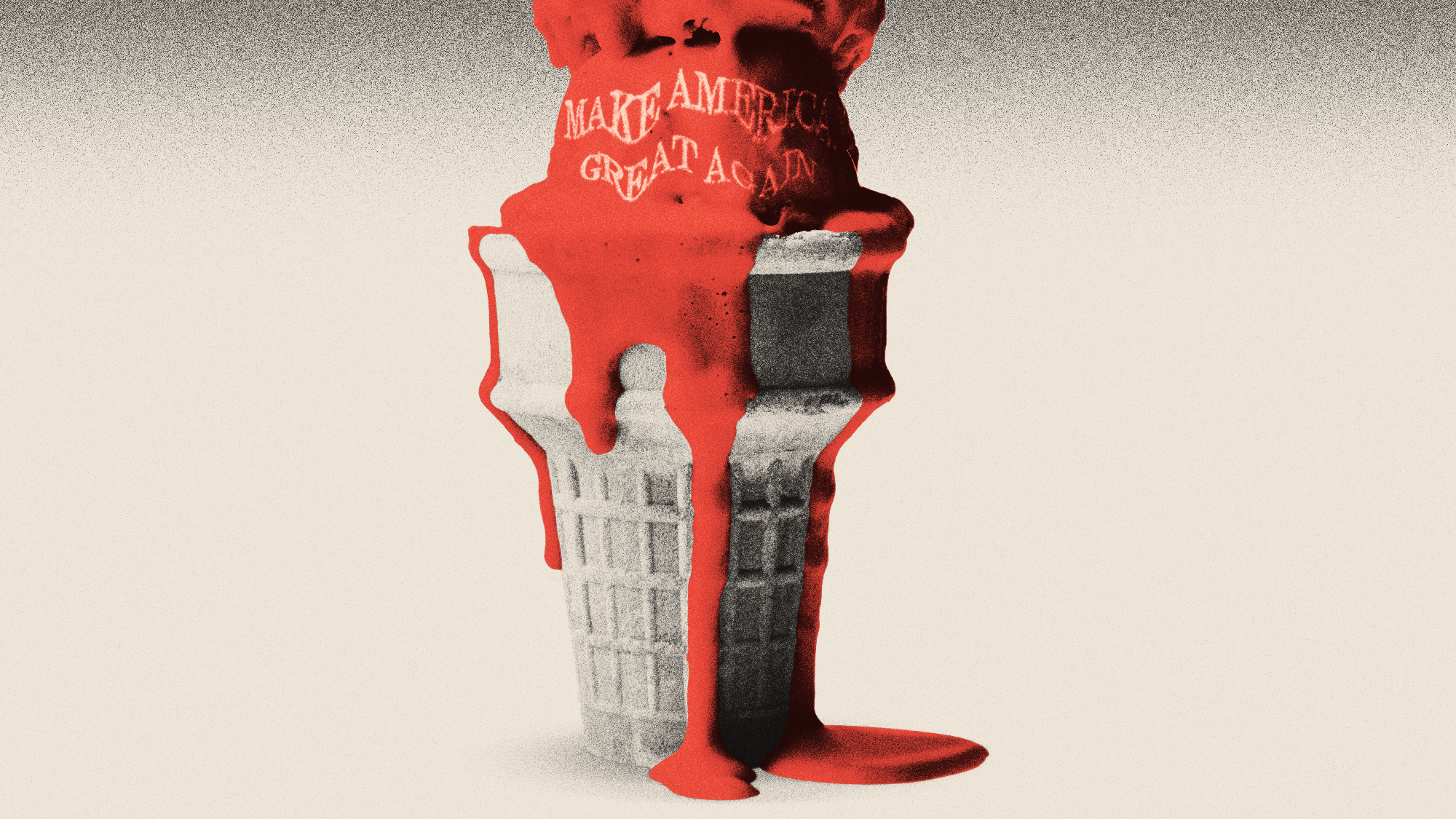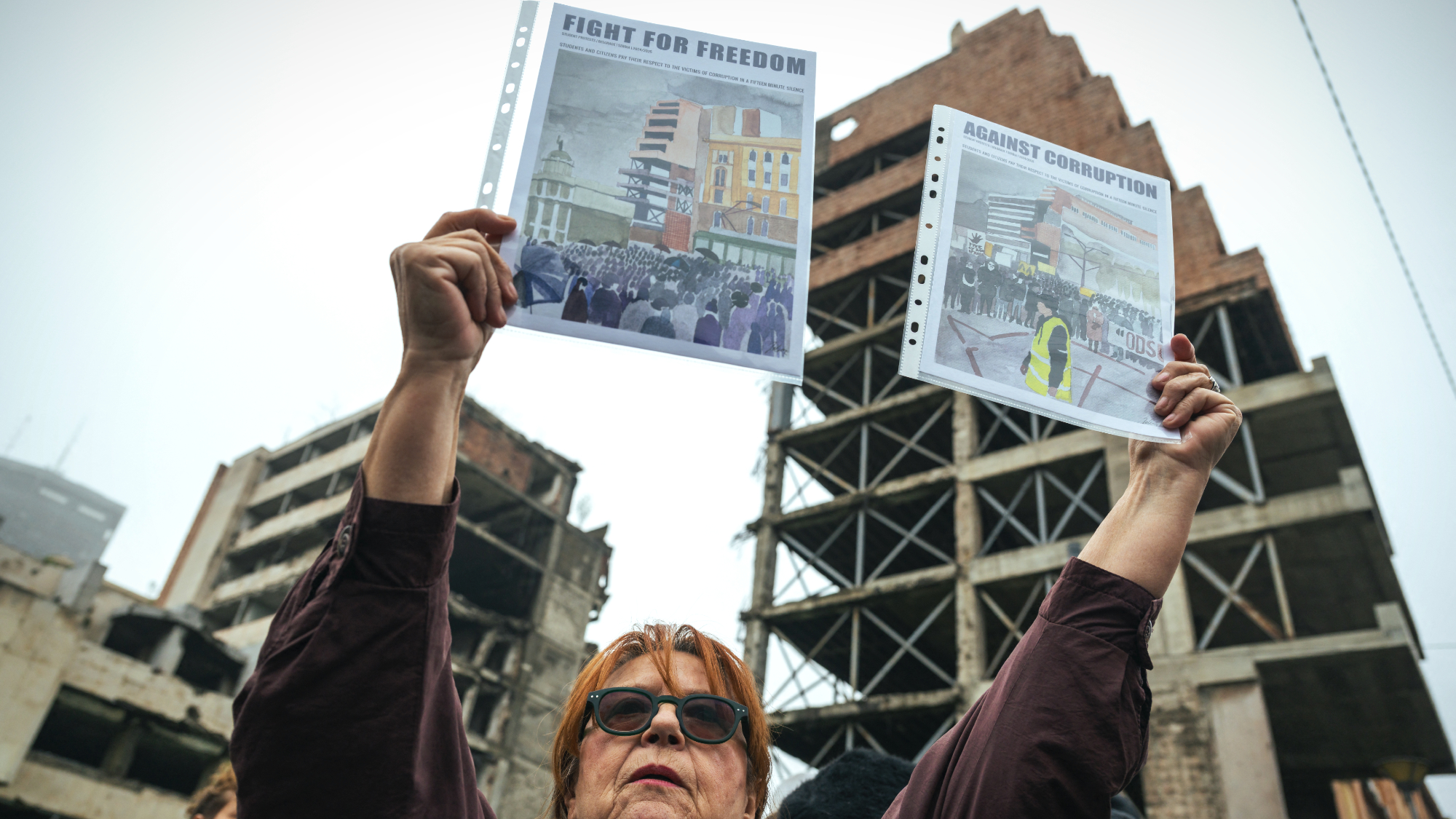Life and Death in the Gaza Strip
Israel and the Palestinian government in Gaza this week declared a cease-fire after five months of fighting and political turmoil. Why is the Gaza Strip now among the most miserable regions in the world?
What are the current conditions in Gaza?
Wretched. Some 1.4 million Palestinians in Gaza are crammed into a strip of land just 5 miles wide and 28 miles long, wedged between Israel and the Mediterranean Sea. One of two Palestinian "territories" recognized by Israel (along with the West Bank), Gaza had been occupied by Israel since the 1967 Arab-Israeli war until last year. Israel unilaterally decided to pull out its troops and settlers, leaving Gaza to be governed by the Palestinian Authority. Since March, Gaza has been under an economic boycott—imposed by Israel, the U.S., and the European Union—that has cut deliveries of food, medicine, and other supplies to a trickle. Western donors have also cut off the international aid that had comprised about half of Gaza's modest $770 million annual gross domestic product. Meanwhile, daily missile attacks and incursions by the Israeli Defense Forces have destroyed much of Gaza's infrastructure and agricultural production.
Why was the boycott imposed?
The Week
Escape your echo chamber. Get the facts behind the news, plus analysis from multiple perspectives.

Sign up for The Week's Free Newsletters
From our morning news briefing to a weekly Good News Newsletter, get the best of The Week delivered directly to your inbox.
From our morning news briefing to a weekly Good News Newsletter, get the best of The Week delivered directly to your inbox.
In January, the Palestinian militant group Hamas—which pioneered the use of suicide bombings against Israel—gained a majority in the Palestinian Authority parliament. International observers agreed that the voting was carried out fairly. Still, Israel and the West shut off aid and trade, because they did not want to put money into the hands of a terrorist group responsible for killing or maiming hundreds of Israeli civilians. The boycott was aimed at squeezing Hamas out of power or, failing that, forcing it to recognize Israel and renounce terrorism. The United Nations and some other parties have attempted to bypass Hamas and deliver food, medicine, and fuel directly to Gaza residents. But distribution has been hampered by border closings and by the poor condition of roads and other infrastructure.
Has the boycott produced the desired results?
Not so far. Hamas still refuses to recognize Israel's right to exist, and in June, tensions exploded when Hamas-linked militants captured an Israeli soldier in a cross-border raid and stepped up its campaign of firing crude rockets into Israel. Israel responded with an offensive in Gaza that killed more than 300 Palestinians, scores of them civilians. Israeli air attacks have flattened hundreds of houses and disabled Gaza's only power station. Israel has also closed border crossings and curtailed commercial fishing. The intent, said an aide to Israeli Prime Minister Ehud Olmert, was "to put the Palestinians on a diet but not to make them die of hunger." Or, as one Palestinian worker told the BBC: "They don't want us to die, but they don't want us to live, either."
Do Palestinians still favor Hamas?
A free daily email with the biggest news stories of the day – and the best features from TheWeek.com
Many Palestinians blame Hamas for their hardships, and tensions with its political rival, the more moderate Fatah, have led to gun battles in the streets. Last month, Hamas did offer to step aside in favor of a unity government that would be more acceptable to the West. The rival parties are now trying to work out a power-sharing arrangement. Whatever the outcome of those negotiations, Hamas won't just go away. It enjoys broad popular support, as demonstrated by its recent tactic of using voluntary human shields to protect likely targets of Israeli attacks. On at least three occasions in recent weeks, hundreds of Palestinians, including women and children, surrounded the homes of Hamas figures believed to be facing an imminent Israeli attack. Israel, concerned about killing civilians and sparking an international outcry, called off the assaults.
How has the crackdown affected daily life?
For all practical purposes, the population is living in a war zone. Civil servants, who make up 60 percent of Gaza's population, haven't been paid since March. Street crime and domestic violence are up, and the scarcity of fresh water has led to outbreaks of dysentery. Reconstruction is nearly impossible because squatters are occupying damaged buildings and construction crews are reluctant to work in areas subject to attacks by Israeli rockets and tanks. Overflights by Israeli jets produce rattling sonic booms, and teachers report that children have difficulty concentrating, are fighting with one another, and showing other signs of stress.
Is there any possibility of peace?
-
 Frank Gehry: the architect who made buildings flow like water
Frank Gehry: the architect who made buildings flow like waterFeature The revered building master died at the age of 96
-
 Is MAGA melting down?
Is MAGA melting down?Today's Big Question Candace Owens, Tucker Carlson, Laura Loomer and more are feuding
-
 Kushner drops Trump hotel project in Serbia
Kushner drops Trump hotel project in SerbiaSpeed Read Affinity Partners pulled out of a deal to finance a Trump-branded development in Belgrade
-
 Has Zohran Mamdani shown the Democrats how to win again?
Has Zohran Mamdani shown the Democrats how to win again?Today’s Big Question New York City mayoral election touted as victory for left-wing populists but moderate centrist wins elsewhere present more complex path for Democratic Party
-
 Millions turn out for anti-Trump ‘No Kings’ rallies
Millions turn out for anti-Trump ‘No Kings’ ralliesSpeed Read An estimated 7 million people participated, 2 million more than at the first ‘No Kings’ protest in June
-
 Ghislaine Maxwell: angling for a Trump pardon
Ghislaine Maxwell: angling for a Trump pardonTalking Point Convicted sex trafficker's testimony could shed new light on president's links to Jeffrey Epstein
-
 The last words and final moments of 40 presidents
The last words and final moments of 40 presidentsThe Explainer Some are eloquent quotes worthy of the holders of the highest office in the nation, and others... aren't
-
 The JFK files: the truth at last?
The JFK files: the truth at last?In The Spotlight More than 64,000 previously classified documents relating the 1963 assassination of John F. Kennedy have been released by the Trump administration
-
 'Seriously, not literally': how should the world take Donald Trump?
'Seriously, not literally': how should the world take Donald Trump?Today's big question White House rhetoric and reality look likely to become increasingly blurred
-
 Will Trump's 'madman' strategy pay off?
Will Trump's 'madman' strategy pay off?Today's Big Question Incoming US president likes to seem unpredictable but, this time round, world leaders could be wise to his playbook
-
 Democrats vs. Republicans: who are US billionaires backing?
Democrats vs. Republicans: who are US billionaires backing?The Explainer Younger tech titans join 'boys' club throwing money and support' behind President Trump, while older plutocrats quietly rebuke new administration